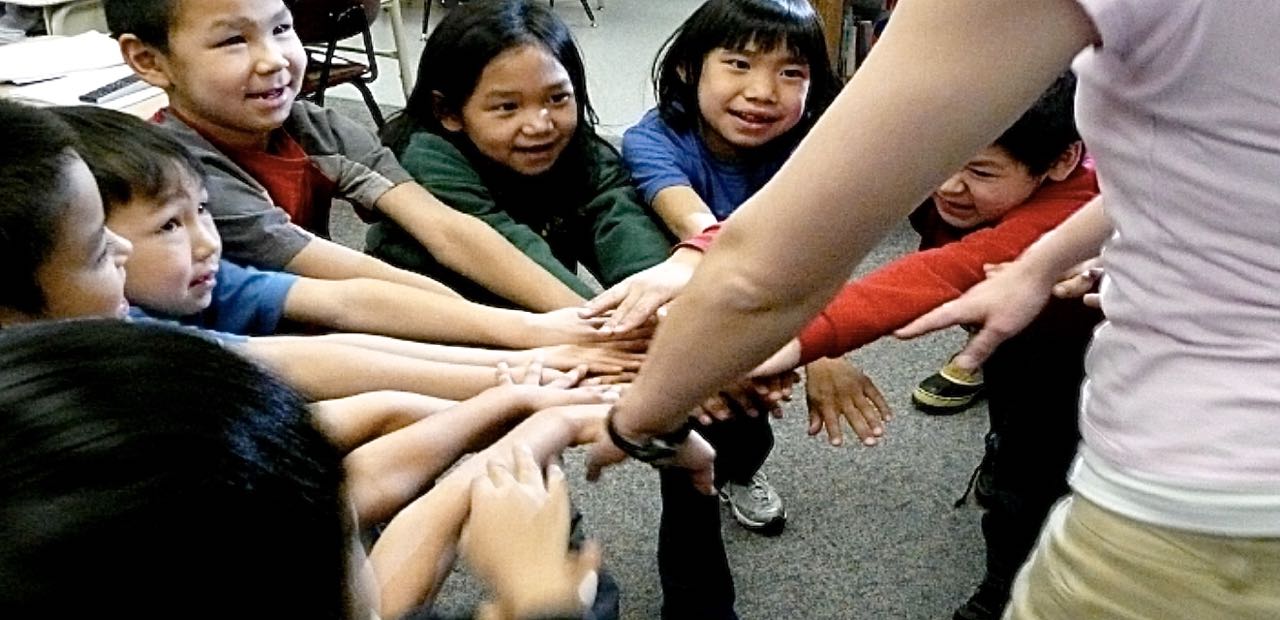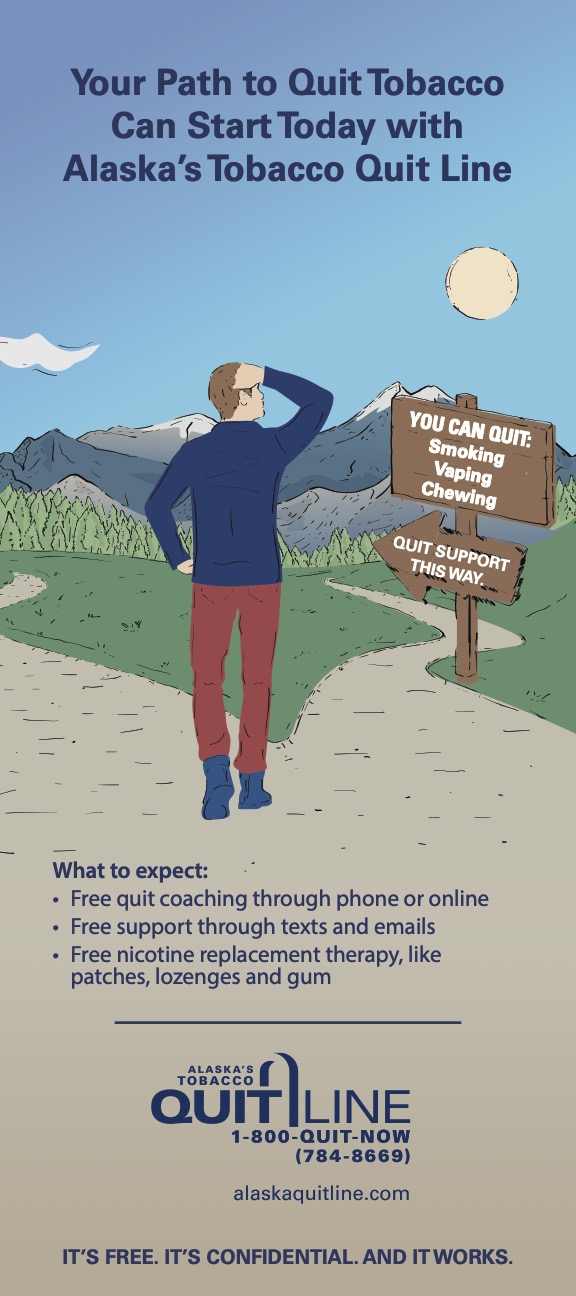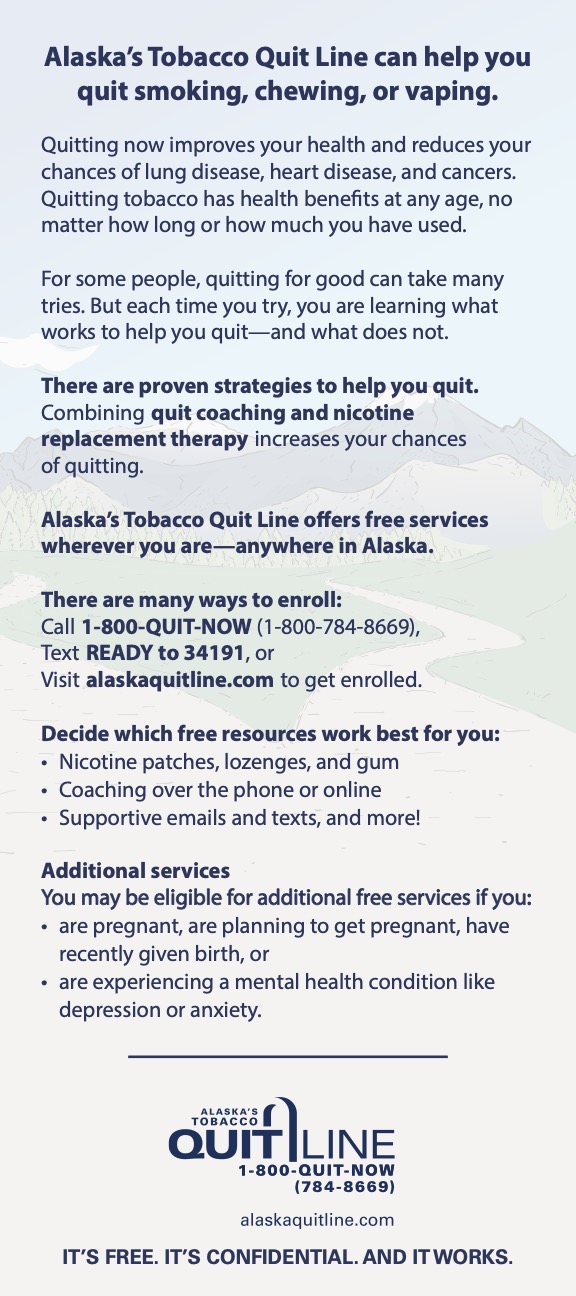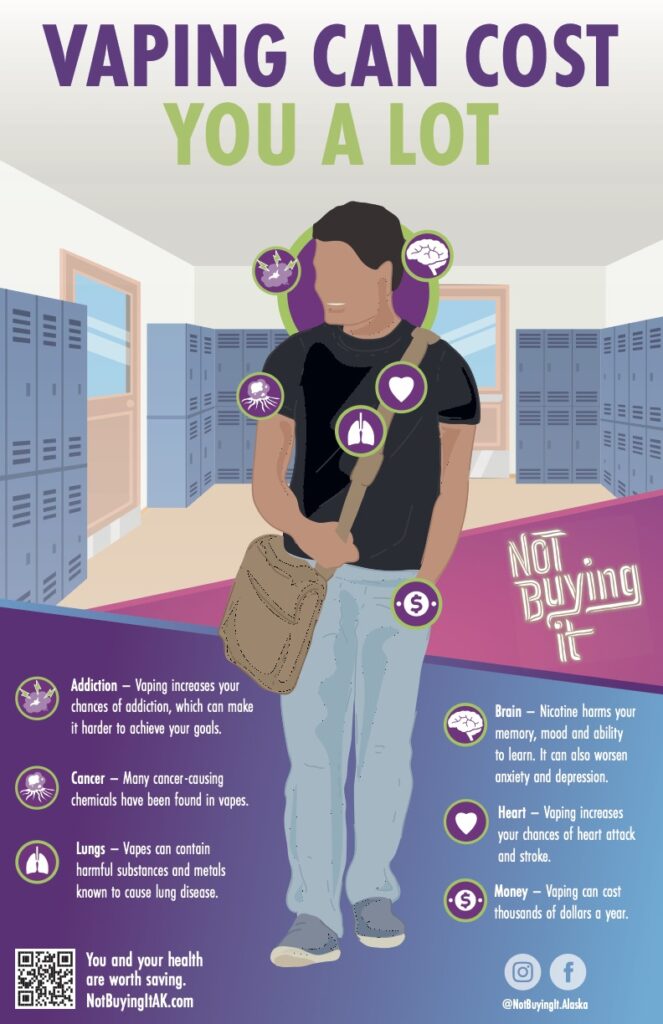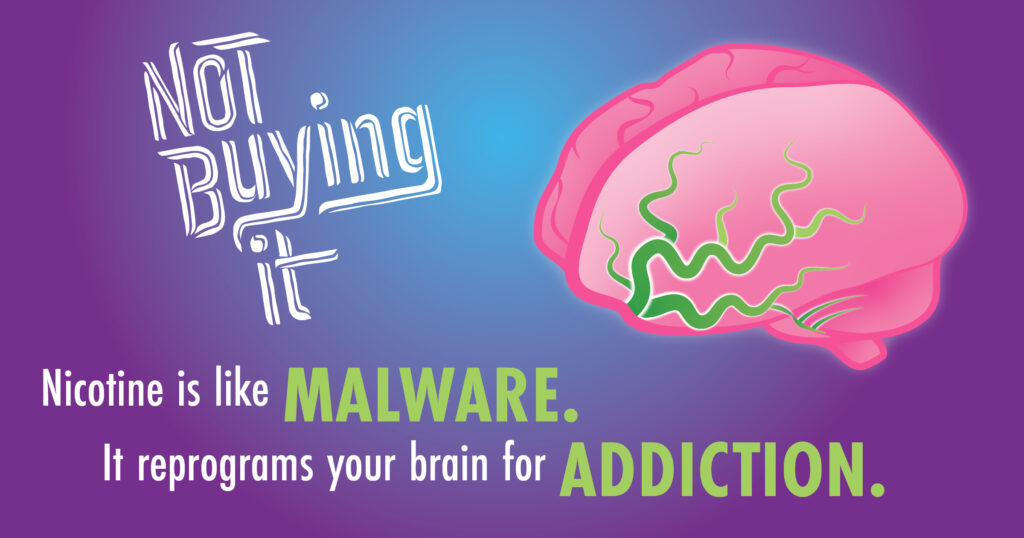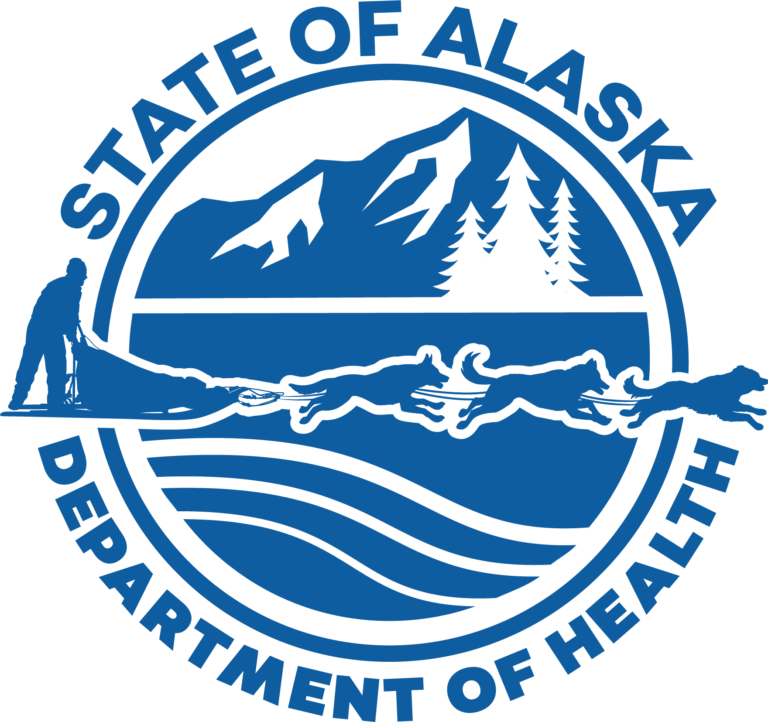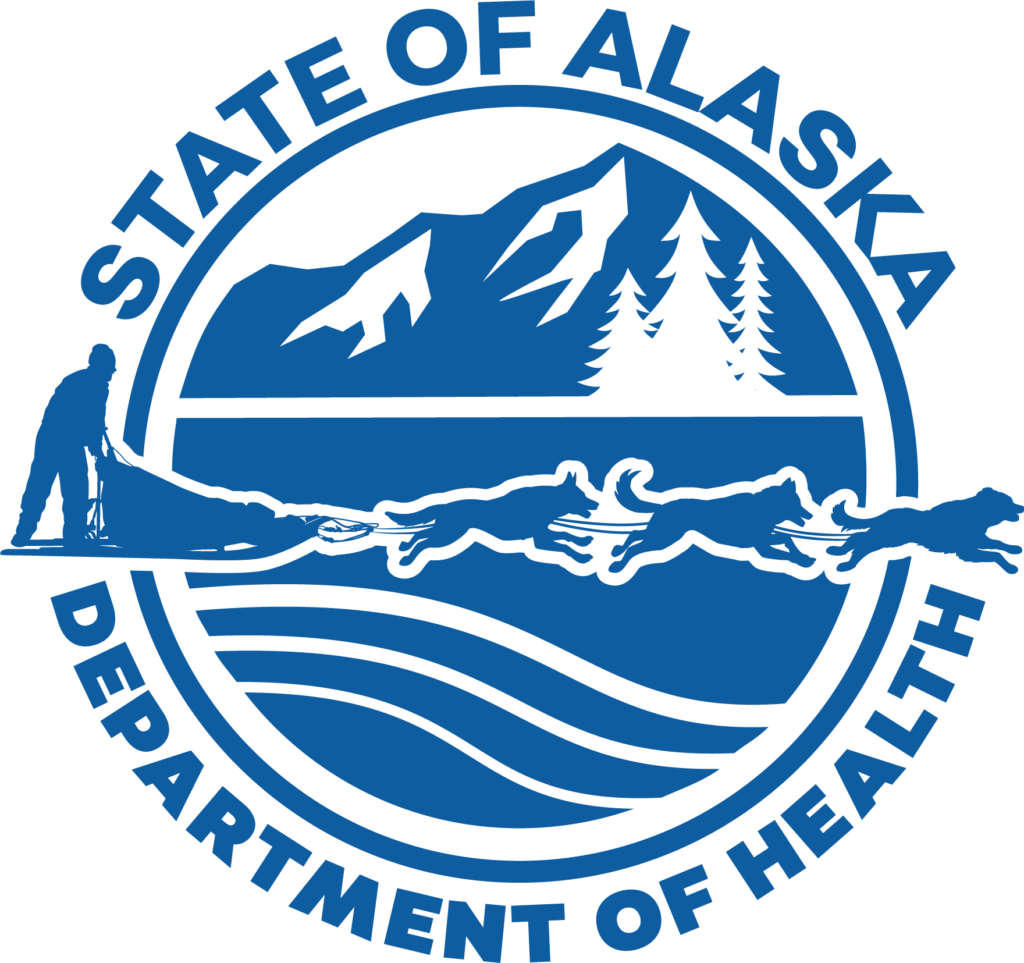
Naomi Davidson, MSW, LCSW, Healthy Schools Specialist, State of Alaska, Department of Health
Bea Pullekines, MPH, Youth Specialist, State of Alaska, Department of Health, Tobacco Prevention and Control Program
You are invited to help promote the American Cancer Society’s Great American Smokeout on November 20, 2025. This national event on Thursday, November 20 encourages people who use tobacco to quit for the day. You don’t have to go it alone. Alaska’s Tobacco Quit Line offers free, confidential coaching and nicotine replacement therapy and is available 24/7!
Free resources to help Alaskans quit tobacco are available.
Email doh.tobacco.info@alaska.gov for more information.
Free support for addressing youth tobacco use
Alaska’s schools can receive free resources to help address youth tobacco and nicotine use. Almost 1 in 4 (23%) used a tobacco product according to the 2023 Alaska Youth Risk Behavior Survey data. This includes all types of tobacco products, like e-cigarettes, cigarettes, and nicotine pouches.
Alaska’s Tobacco Prevention and Control Program launched a tobacco toolkit. Toolkit materials help educate about the health risks of tobacco and nicotine. They also promote Not Buying It and AK Live Vape Free. Not Buying It is a statewide campaign that encourages young Alaskans to live tobacco- and vape-free lives. AK Live Vape Free is a confidential text messaging program. Teens ages 13-17 can join for free by texting VAPEFREE to 873373.
All materials are free and can be shipped anywhere in Alaska at no cost to schools.
Interested in curriculum, alternative to suspension programs, youth mentorship, or evaluating your school’s tobacco policy? Contact us at doh.tobacco.alaska.gov!
School Health Profiles!
There are two reliable sources of school-related data that can help districts and administrators create a healthier environment for student learning and staff development: School Health Profiles (Profiles) and the Youth Risk Behavior Survey (YRBS). Administered in alternating years, these surveys work together to create a comprehensive picture of student health and how the school environment and curricula can support academic achievement. It is well known that healthy students do better academically.[1] Healthy students have lower absenteeism rates, fewer behavioral issues and higher graduation rates.
In the 2024 Profiles survey we learned that while 94% of Alaska’s secondary schools have a tobacco free policy, only 54% have a comprehensive tobacco-free policy, one that prohibits use by everyone, on all school grounds, at all times, and includes vaping. The 2023 YRBS reports that 22.9% of high school students statewide use some form of tobacco, with e-cigarettes as the most commonly used product at 17.3%. This is concerning given their high concentrations of nicotine and their harm effects on youth.
While the Department of Health is waiting to receive results from the 2025 YRBS, 2026 school year is a Profiles survey year! The survey is administered to secondary school principals and lead health teachers (or the person identified to be most knowledgeable about health education in the school). Surveys will be emailed to secondary school principals around early 2026—or sooner if they’re ready! Profiles data is available on the CDC School Health Profiles Explorer dashboard, and you can see where Alaska’s data is compared to other states’ data. Historically, the Profiles data is underutilized, however this data in conjunction with YRBS data could be useful to compare student vs. administrator perceptions of Alaskan schools. Any questions, thoughts, or ideas please contact Jenna Test at jenna.test@alaska.gov
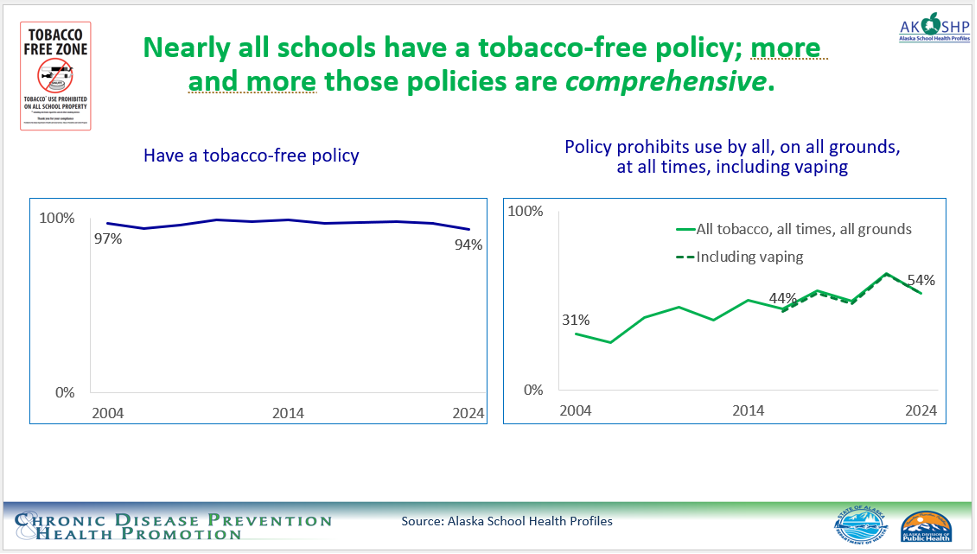
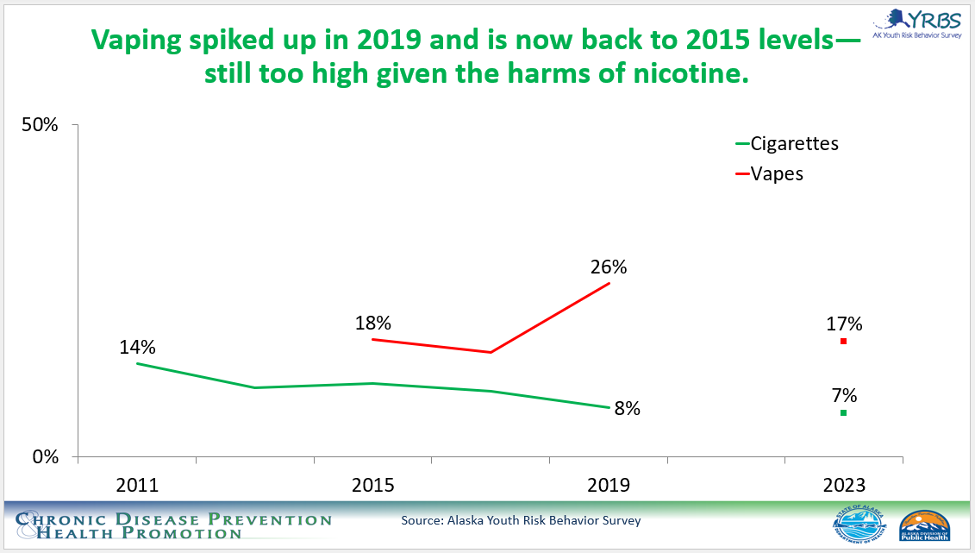
[1] Centers for Disease Control and Prevention. (2017). Health-Related Behaviors and Academic Achievement Among High School Students — United States, 2015. Morbidity and Mortality Weekly Report, 66 (35). Available at https://www.cdc.gov/mmwr/volumes/66/wr/pdfs/mm6635a1.pdf
